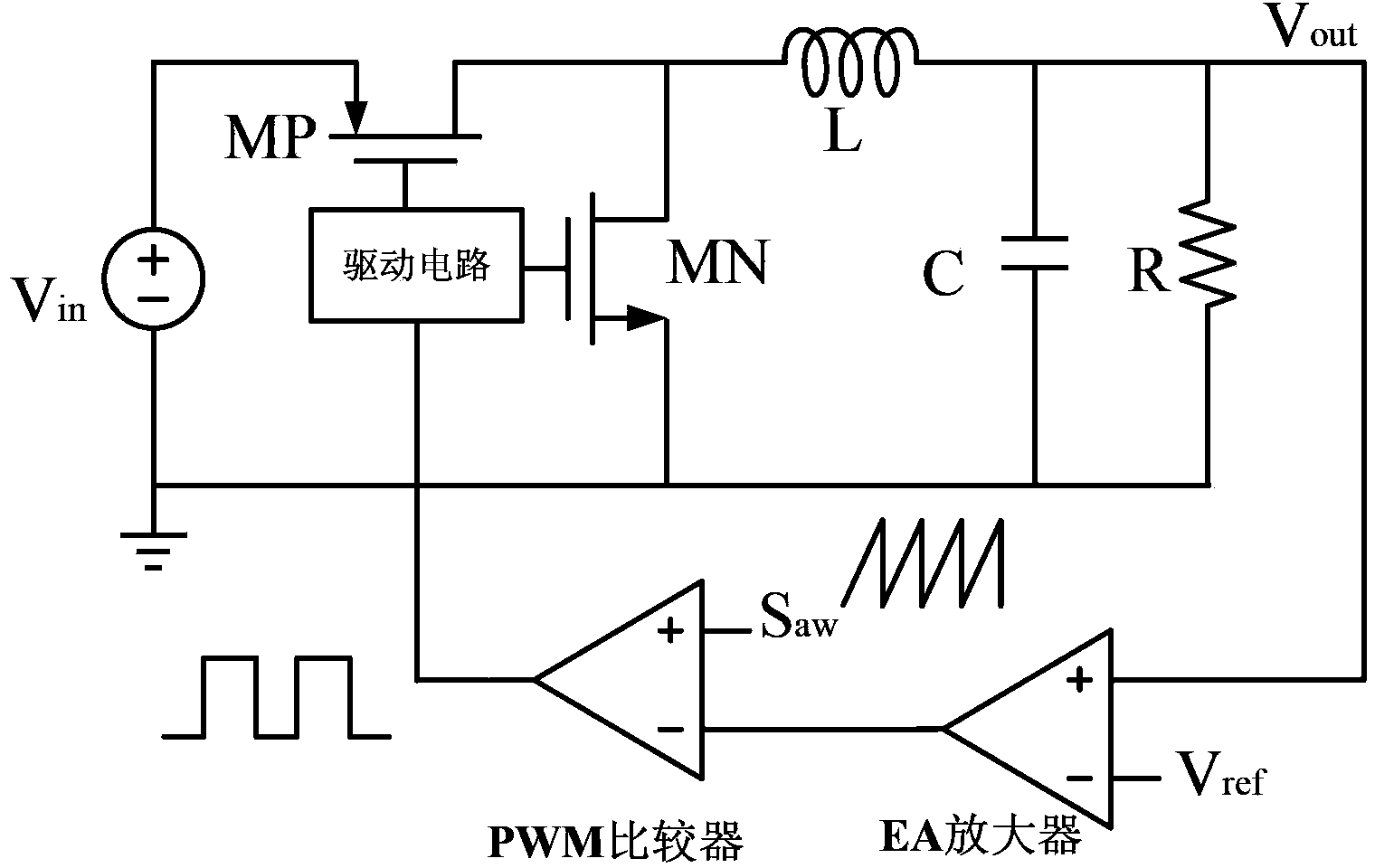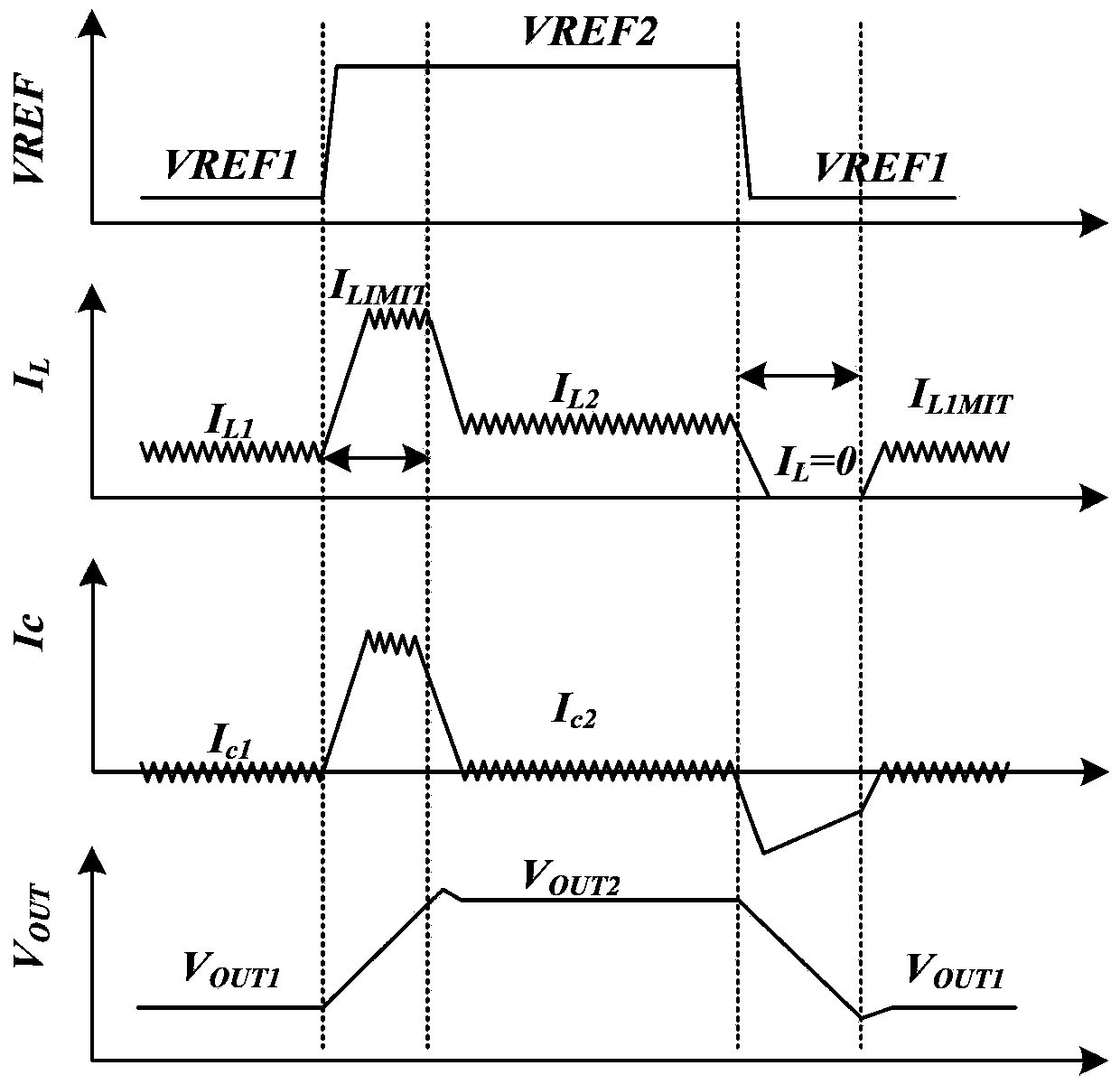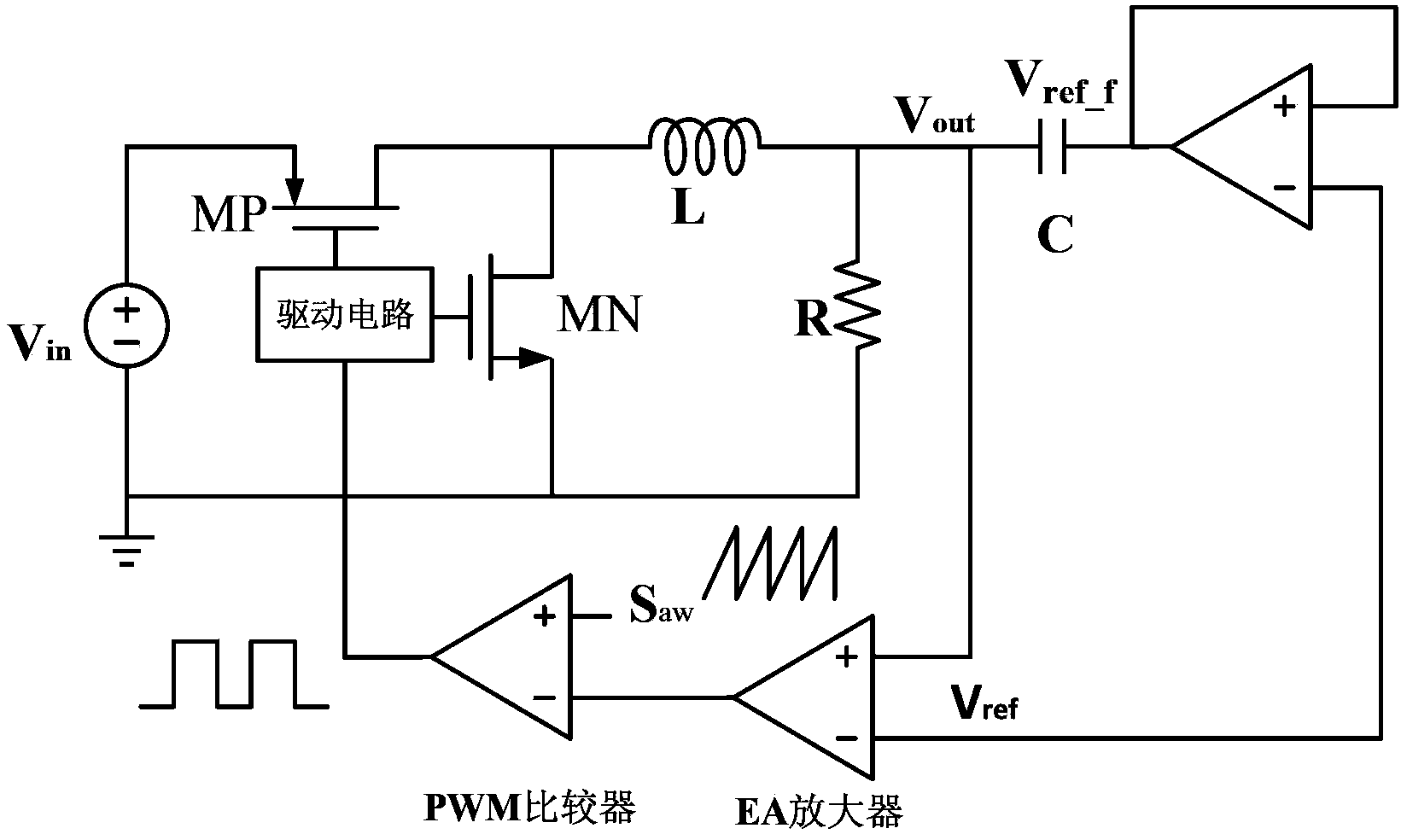DC-DC converter
A DC-DC and converter technology, applied in the field of DC-DC converters, can solve problems such as limiting the output voltage drop speed, and achieve low power consumption, simple structure, and easy implementation
- Summary
- Abstract
- Description
- Claims
- Application Information
AI Technical Summary
Benefits of technology
Problems solved by technology
Method used
Image
Examples
Embodiment Construction
[0022] Below in conjunction with accompanying drawing, describe technical scheme of the present invention in detail:
[0023] Such as figure 1 As mentioned above, it is a basic frame structure of a traditional DC-DC converter. right figure 1 The schematic diagram of the DC-DC converter for output voltage regulation is shown in figure 2 shown. When the DC-DC converter adjusts the output voltage rise process, the reference voltage rises rapidly, so that the PWM comparator outputs a square wave signal with a large duty cycle, and the power transistor MP is turned on for a long time through the drive circuit, causing the inductor current to rise rapidly. After the inductor current exceeds the value set by the current limiting module, the inductor current changes around the current limiting value. In this process, the inductor current charges the capacitor with the maximum current, so that the output voltage rises rapidly until the output voltage is equal to the reference voltage
PUM
 Login to view more
Login to view more Abstract
Description
Claims
Application Information
 Login to view more
Login to view more - R&D Engineer
- R&D Manager
- IP Professional
- Industry Leading Data Capabilities
- Powerful AI technology
- Patent DNA Extraction
Browse by: Latest US Patents, China's latest patents, Technical Efficacy Thesaurus, Application Domain, Technology Topic.
© 2024 PatSnap. All rights reserved.Legal|Privacy policy|Modern Slavery Act Transparency Statement|Sitemap



